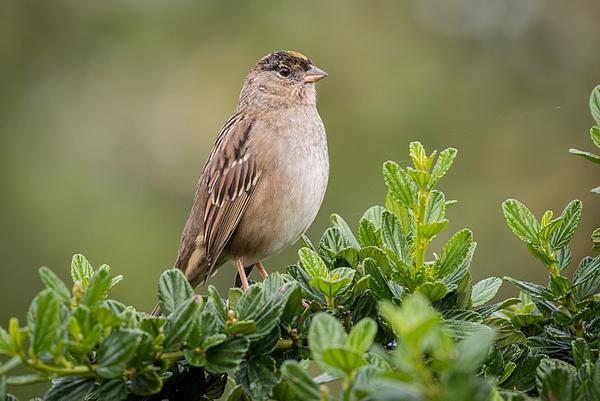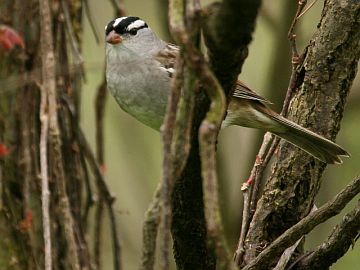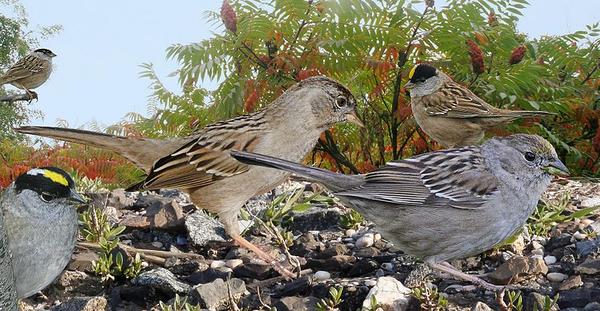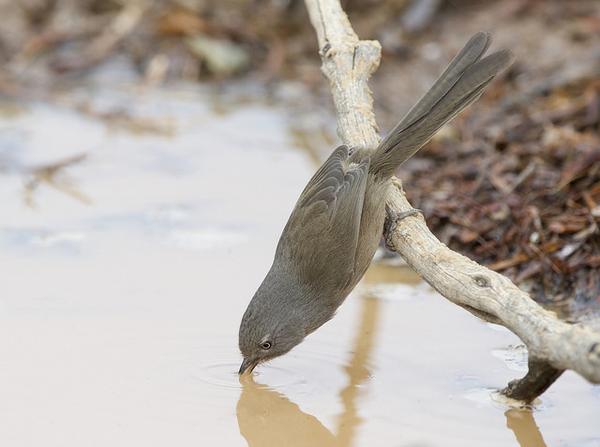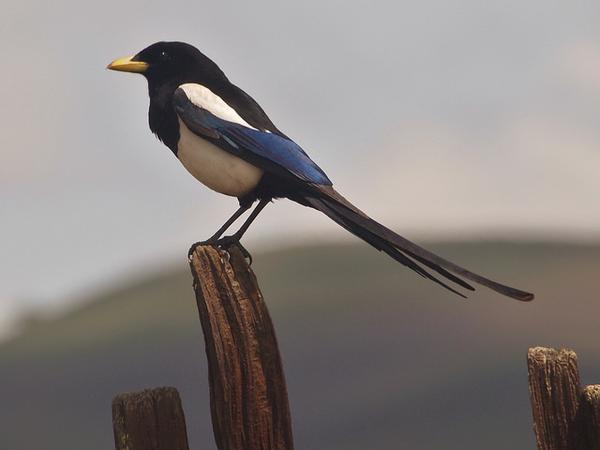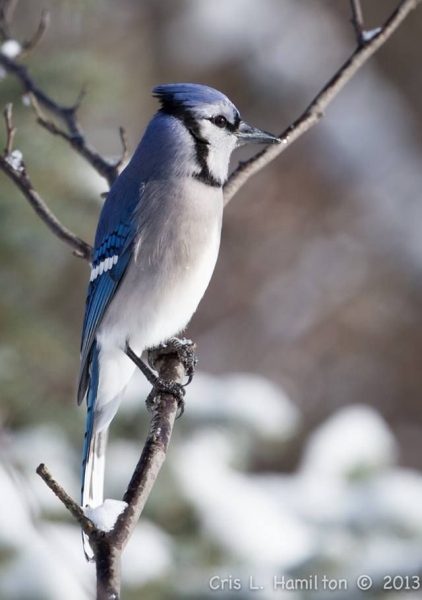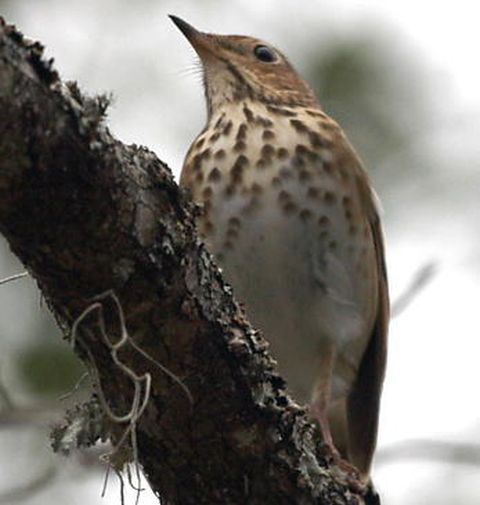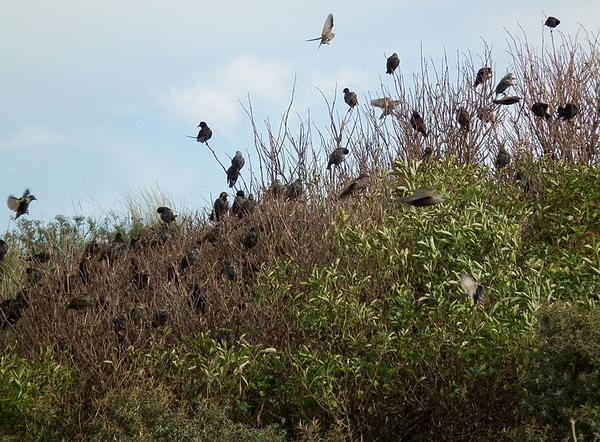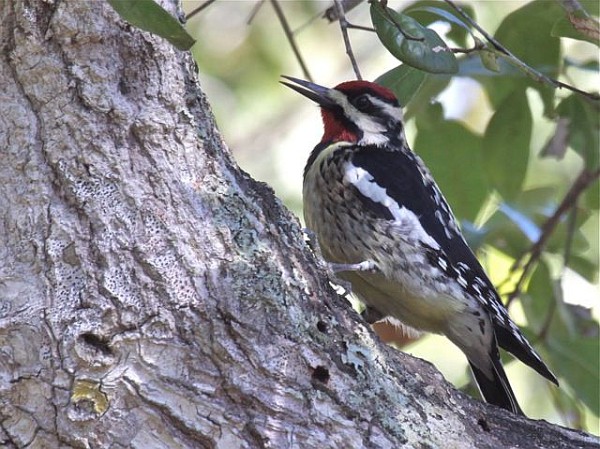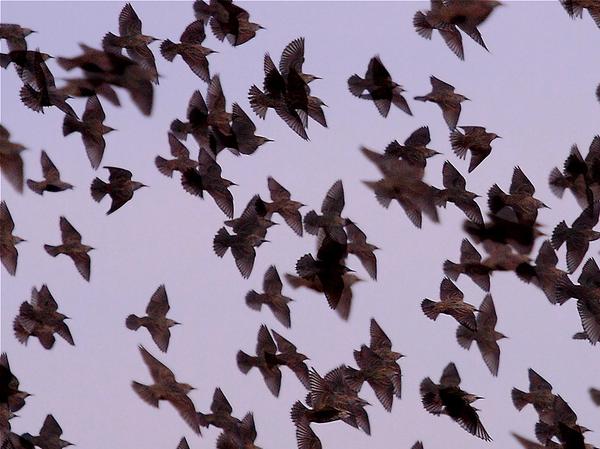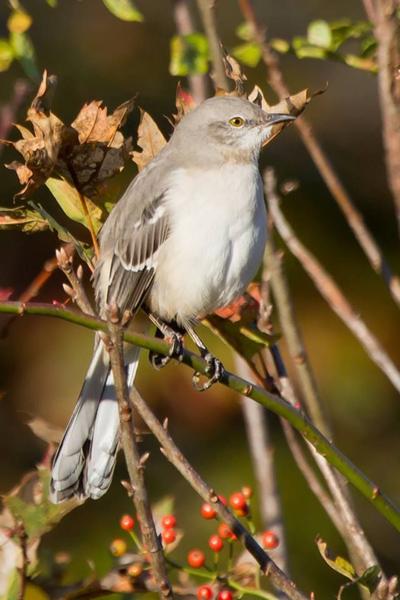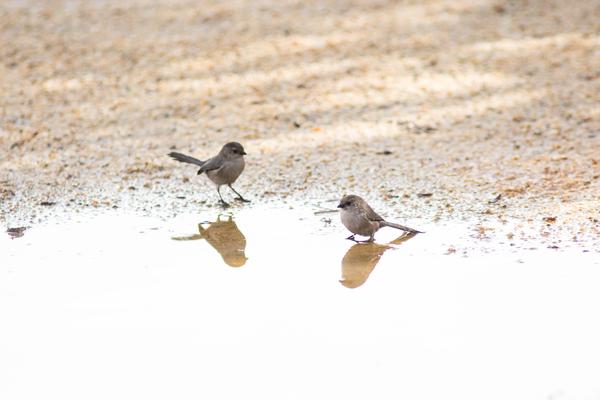
This tiny bird is the only member of its family (Aegithalidae) in the Americas. Smaller than a warbler, the bushtit’s closest relatives live in Eurasia.
Bushtits (Psaltriparus minimus) are western birds that tend to stay put, though some move downslope for the winter. At this time of year they flock like chickadees, flitting, chattering and hanging upside down to glean insects and spiders from the trees.
When I saw them in California my first thought was “brown chickadees.” This closer look shows why.
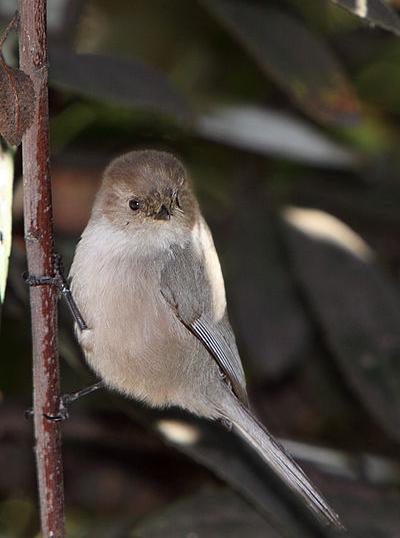
In February the flocks break up into pairs and the couples spend four+ weeks weaving a foot-long tubular nest like the one shown below. With a hooded entrance at the top, it is far larger than one bird needs but is big enough to hold the whole family and their friends on cold nights.
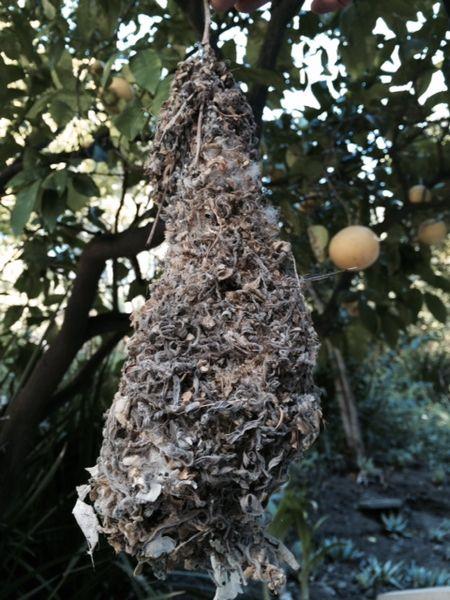
Listen for bushtits calling as they follow each other from tree to tree. (recording of American Bushtit by Kristie Nelson, xeno-canto XC363349)
So tiny! They are smaller than kinglets.
(photos from Wikimedia Commons; click on the images to see the originals. Audio from Xeno-Canto XC363349 by Kristie Nelson)
